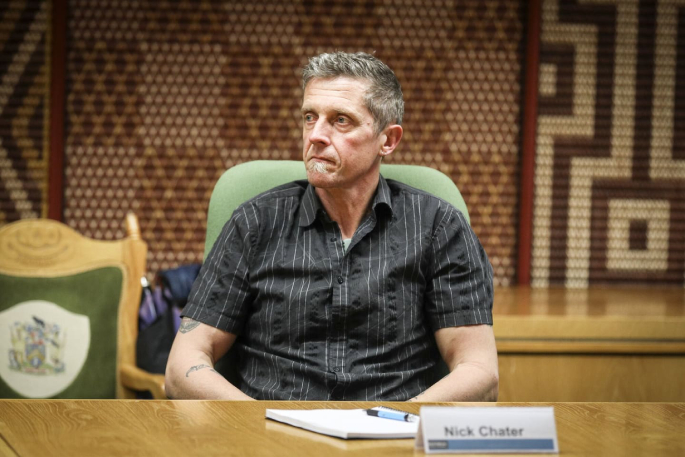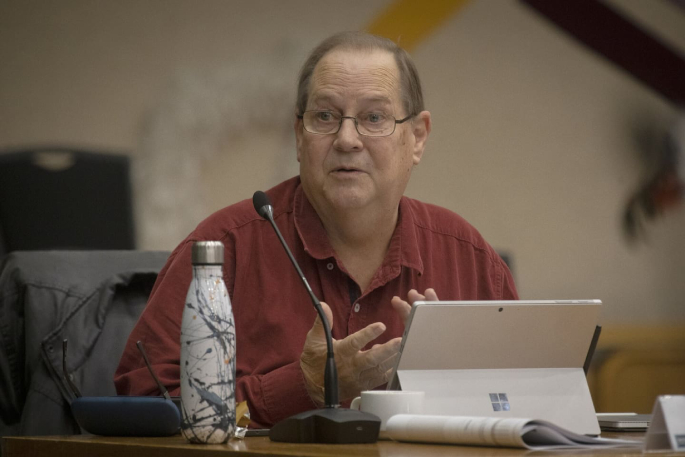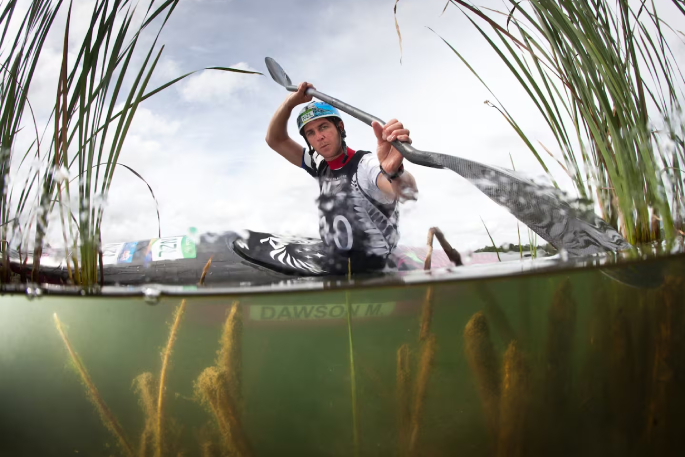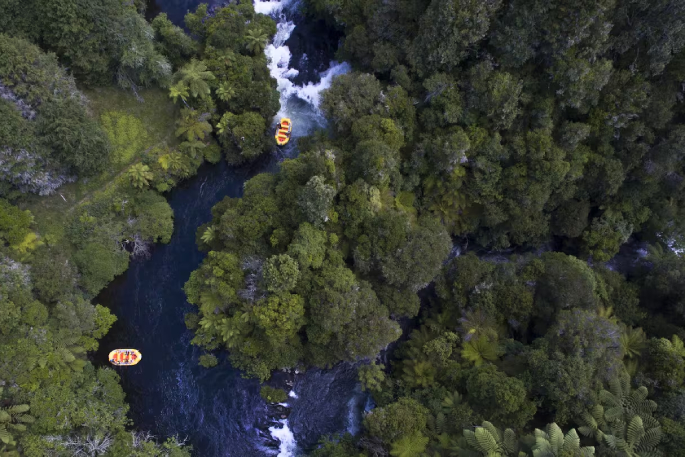A possible dam proposal on the Kaituna River could have “catastrophic impacts” if approved under fast-track legislation, the Rotorua Lakes Community Board has heard.
Olympian and Whitewater New Zealand board member Mike Dawson, from Tauranga, spoke at the board’s monthly meeting on March 25, outlining his concerns about a project that could be proposed by landowners Taheke 8C.
The proposal would see a dam being built just below the Trout Pool Falls section of the river to establish a “green energy hub”.
The board was told it could provide electricity for between 12,000 and 14,000 homes in the region.
Taheke 8C unsuccessfully applied last year for it to be considered under the Government’s fast-track legislation.
The group was considering reapplying after applications opened in February.
A similar Kaituna dam project was applied for in 2007 but was scrapped due to environmental concerns and not being commercially viable.
‘Green energy hub’
Mark Henry – an associate at resource management consultancy Mitchell Daysh – told the board he had been engaged by Taheke 8C, who wanted to establish a “green energy hub”.
He said a structure would be placed in the Kaituna River, causing impoundment above it and diverting water.
The water would go through a regulating pond and power station before returning into the Kaituna River – about 3km downstream of where the weir structure would be.
He presented an animation of the proposed scheme.
 Rotorua Lakes Community Board deputy chairman Nick Chater pictured in 2020. Photo / Andrew Warner
Rotorua Lakes Community Board deputy chairman Nick Chater pictured in 2020. Photo / Andrew Warner
Deputy chairman Nick Chater said the biggest concern from the community was the “fast-tracking” of the project with “very little community engagement”.
Chater referred to a meeting for which 24 hours’ notice was given. Henry said this was “not set up as a community session”.
Henry said Taheke 8C had been speaking with the Ministry of Environment about reapplying under fast-track legislation.
“They’re still trying to make that final decision.”
Taheke 8C would also need to apply for a referral from the Minister for Infrastructure if the project was to be considered, Henry said.
‘Some’ opportunity lost for kayakers
Board member Jennifer Rothwell asked about the impact for kayakers and sportspeople, and the financial advantages.
Henry said “some” opportunity would be lost in gorges that “high-end kayakers” used.
No commercial rafting areas would be affected, he said.
Henry said he was not privy to the “financial intimacies” of the project but Takehe 8C – as a commercial entity – would be “providing that lens”.
 Rotorua Lakes Community Board chairman Phill Thomass pictured in 2022. Photo / Andrew Warner
Rotorua Lakes Community Board chairman Phill Thomass pictured in 2022. Photo / Andrew Warner
Chairman Phill Thomass asked what the water take was from the 3km section as there was a “very strict” resource consent about minimum and maximum flows.
Henry said it was a “diversion of water rather than ... take of water”.
He said there would be “residual or environmental flow” in the section below the weir. This section was steep and turbulent and did not support “a whole lot of aquatic ecology” but Taheke 8C was working with ecologists to ensure the wellbeing of the river.
Board member Peter MacMillan asked how many megawatts the output was.
Henry said it was 16 megawatts but could be “slightly up” during peak times.
‘Could have catastrophic impacts’
Thomass allowed members of the public to ask questions.
Paddle Power NZ owner Andi Uhl asked how many cubic metres were required for power generation.
Uhl said the river had been on “very low flows” since December and would likely continue until April. He questioned if the power station was a “viable business” when flows were low.
Henry said he was not certain of the minimum, but understood the mean flow was 14 to 18 cubic metres.
He said the hydrological record had been assessed as part of the design.
 Olympian Mike Dawson pictured in 2017. Photo / Stephen Parker
Olympian Mike Dawson pictured in 2017. Photo / Stephen Parker
Dawson asked what the capacity factor of the dam was, and the required flow for it to generate its peak output.
Henry could not answer those questions.
Dawson responded: “Until we know this peak capacity flow, we can’t be sure of the environmental impacts downstream in terms of erosion, change of flows.”
He said if it was upwards of 60 cubic metres per second, “that’s a huge change from the residual flow to the peak flow”.
Dawson said 60 cubic metres would be almost 10 cubic metres higher than the highest record flows on the river so it “could have catastrophic impacts”.
Henry said it was “awkward” to answer “very specific” questions “on the fly”.
Thomass suggested emailing questions to Henry.
“I would say you’ll get these questions at public consultation,” Thomass said.
Thomass said there was a “high level of anxiety” in the community due to a “perceived lack of consultation” and the possibility of it being fast-tracked.
“Any project of this size needs to have its community around it engaged with.”
Megan Wilson is a health and general news reporter for the Bay of Plenty Times and Rotorua Daily Post. She has been a journalist since 2021.



3 comments
The Master
Posted on 29-03-2025 15:15 | By Ian Stevenson
Looks like a cycle way scenario unfolding here. At best a few, in fact very few pond-paddlers are seeking to stop hydro based power generation... Obviously the official (but deranged) narrative to: - Increase green energy power production, to have more generation capacity, more supply means less power cost to all New Zealanders are all 100% a really good thing...
Where is Greta Thunberg when needed in cases like this?
The Master
Posted on 29-03-2025 15:16 | By Ian Stevenson
This is a remote, little real use stretch of river that can be changed a little only to provide significant benefits to so many in the area. Super-fast track would be best indeed.
Hmmm
Posted on 30-03-2025 11:04 | By Let's get real
Guess what..? The only real concern is from a sport!!
When did sport (a pastime that is now a professional business enterprise) become so important that it is used so often to prevent genuinely needed progress.
We have golf and betting on horses blocking the construction of housing and possibly a hospital, and we now see canoeing potentially blocking the production of electricity instead of burning coal.
How can the luvvies possibly get to sleep at night..?
Leave a Comment
You must be logged in to make a comment.